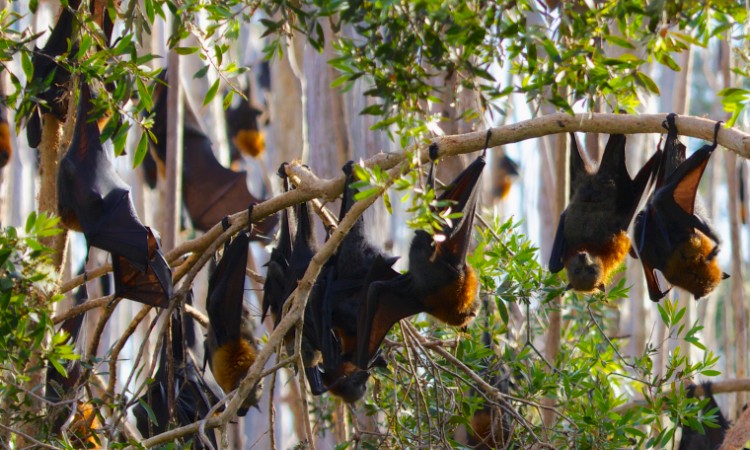
Fortnightly monitoring of the Flying-foxes Photo credit: J. O'Connor

Understanding our Flying-foxes
Council is proactively undertaking monitoring and management of Flying-foxes
Flying-foxes also known as fruit bats play an important role in dispersing seeds and pollinating flowering plants. This keeps our local environment reserves healthy.
Council however understands it can be difficult living near Flying-fox roosts and management needs to be responsive to the social and psychological needs of the community while protecting them and the long-term environmental benefits they provide.
To do this council is proactively undertaking monitoring of Flying-foxes to better understand their movement and to inform management actions.
There are over 40 current and historic Flying-fox roosts across the Sunshine Coast. The sites are routinely monitored to better understand Flying-fox movement and inform management actions. Data gathered is shared with the community via an interactive mapping tool.
Council has developed a Regional Flying-fox Management Plan to provide a range of clear management options to assist council in decision-making on how best to manage Flying-foxes within the region. You can read it here or watch the video here.
Council is also partnering with leading experts to improve our understanding of Flying-foxes. A research partnership was undertaken with Melbourne University and the Australian Research Council to explore ways to resolve human and Flying-fox conflict in the face of environmental change. The results of this project will help to inform future management actions on the Sunshine Coast
You may also be interested in
Biodiversity
Biodiversity is the variety of all life plants, animals, fungi and microorganisms.
Population change
The Sunshine Coast is one of the fastest growing areas in Australia.
Adaptation and resilience
Adaptation and resilience is our community’s ability to respond and adapt to a changing climate.